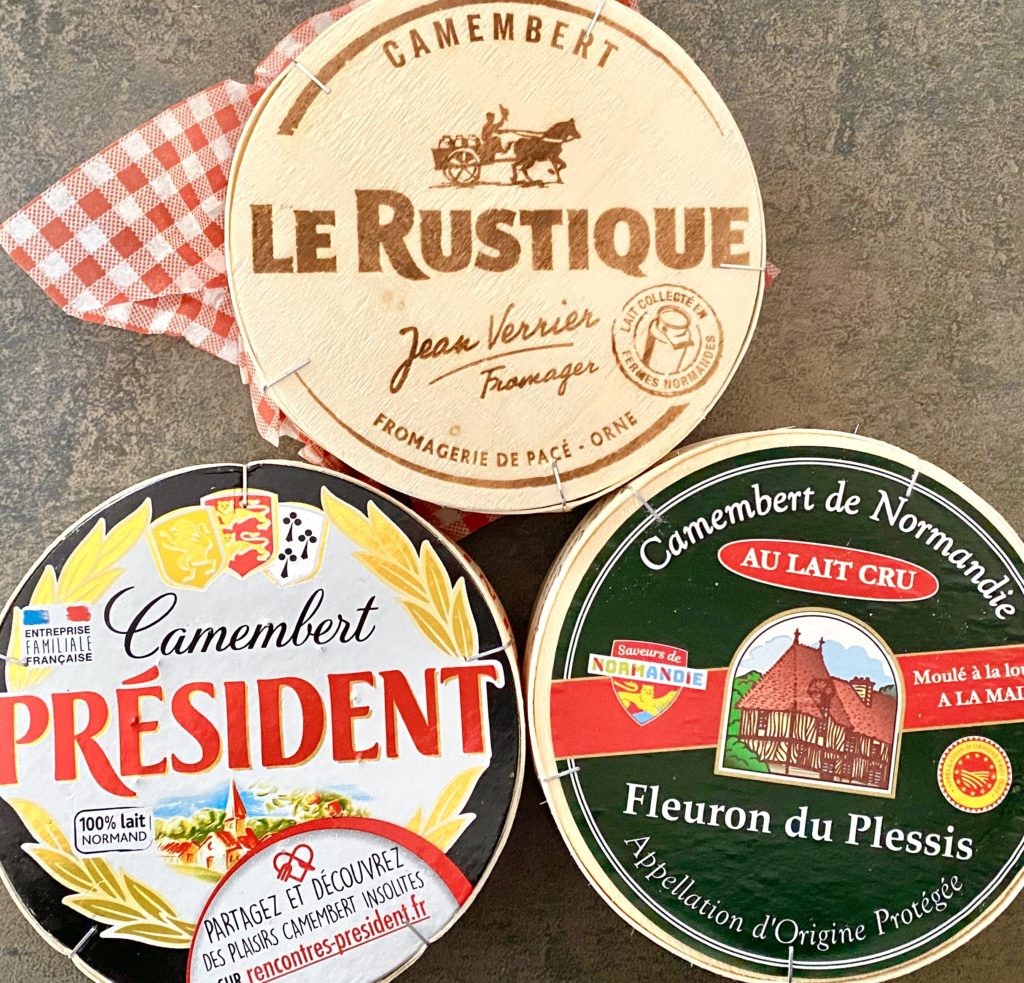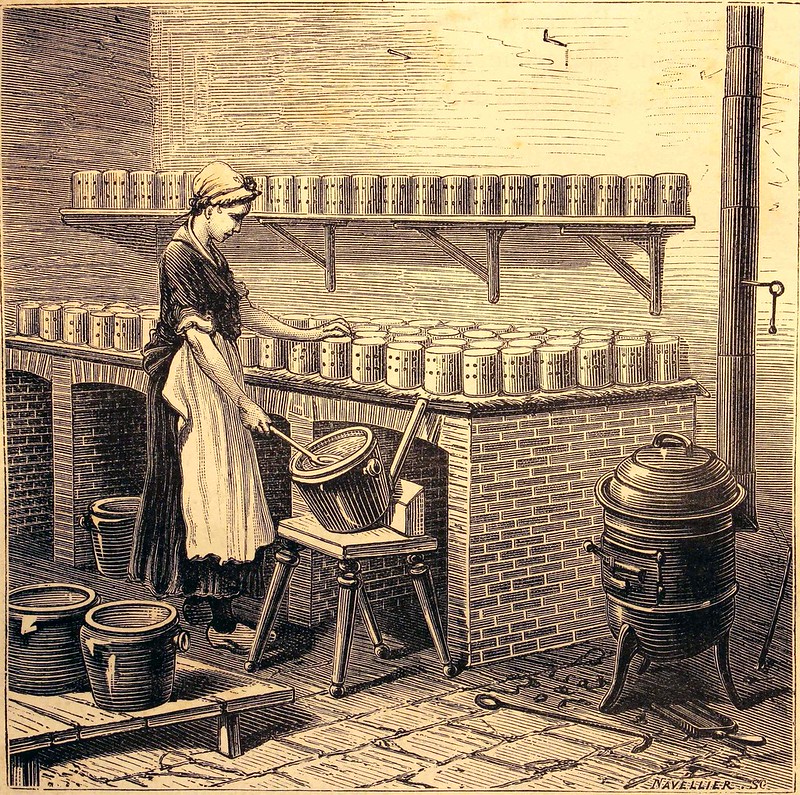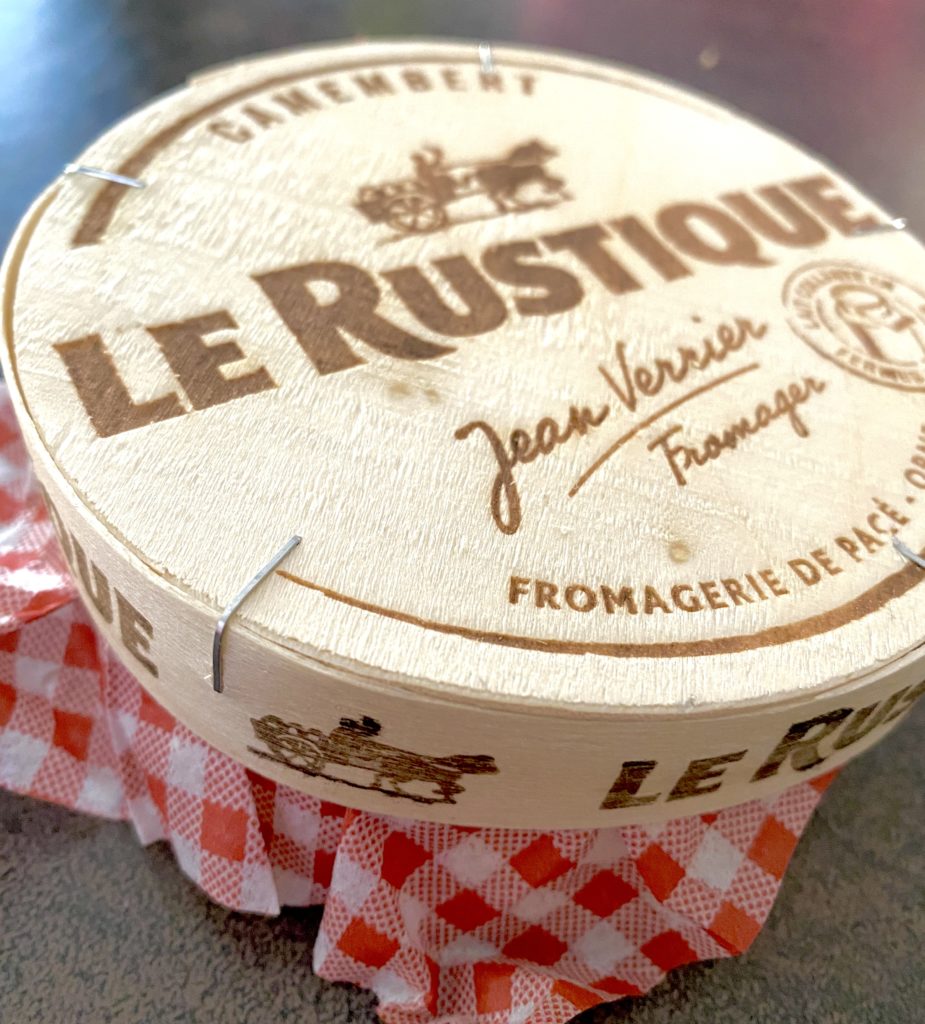In the lush, green hills of the Normandy countryside, in the north of France, lies the tiny village of Camembert. Home to around 200 people and a cheese museum, legend tells us that it was here, in 1791, a priest by the name of Abbot Charles-Jean Bonvoust sought refuge whilst on his way to England, to escape the persecution of the new revolutionary government in Paris. Luckily for the priest, he was found by a local fromagère, cheesemaker Marie Harel, who kept him safe. In gratitude, Bonvoust, who coincidentally was also a fromagèr, handed Marie the recipe for a cheese from his local area of Brie. Marie set to work, using the recipe but adding a Norman twist – smaller cheese moulds and with no added cream. And voilà, camembert cheese was born. But did this really happen? Did a man from Brie in the village of Camembert really give away the secret recipe?
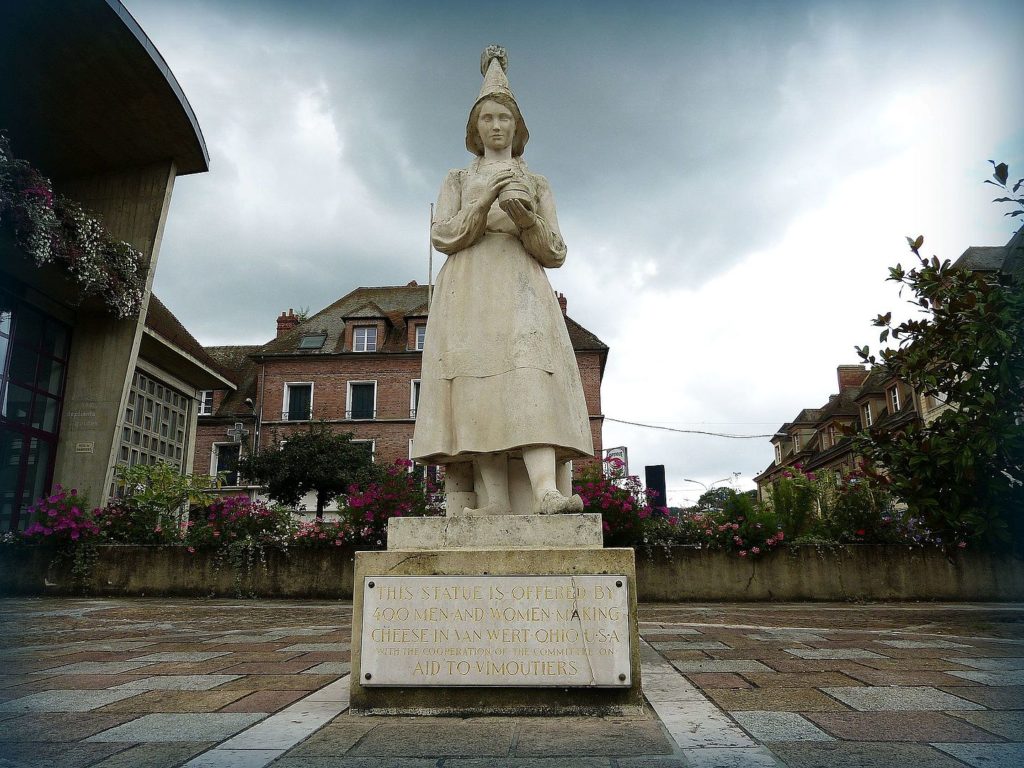
It’s a nice story, the invention of camembert by Marie Harel, given the recipe by the priest from Brie. She was born in 1761 in Crouttes, married in Camembert, and lived in Vimoutiers, all within a few kilometres of each other in the Pays d’Auge. She worked at the farm of the Manor Beaumoncel in Camembert, a beautiful 17th century timbered manor house can still be seen today, and was 28 years old when the Bastille prison in Paris was attacked in 1789 – the start of the French Revolution. Whilst Paris may have been in turmoil, it was life as usual for much of the countryside. Marie made cheese, she passed along her knowledge, and within a couple of generations her family, the Paynel family were prominent fromagèrs in the region, making ‘real’ camembert.
And Abbot Charles-Jean Bonvoust? He was not born in the Brie region but in Normandy itself, in Alençon. But he was in hiding during the Terror of the French Revolution, as parish priests who refused to swear allegiance to the Republic were enemies of the state, and were in danger of being executed. Bonvoust is known to have been in Camembert from July 1796 to February 1797, probably staying at the farm where Marie worked. He was eventually captured in late 1797, and died in prison 18 months later. For the record, he was also not a maker of cheese.
We first hear of cheese from the village of Camembert in 1708. Thomas Corneille, author of Dictionnaire universel géographique et historique, wrote that in “Vimoutiers … every Monday a large market is held, to which are brought excellent cheeses from Livarot and Camembert.” Whether these cheeses had the same bloomy rind as the cheese we now know as camembert is not possible to know. However, various historical texts and archaeological objects show that cheese making was common in the Pays d’Auge at the time of Corneille.
Next time you’re in Camembert, stop in to see the House of Camembert museum
Cheese was an important part of the French diet. Taken at the end of the meal, it was believed to help with digestion (so you don’t have to feel guilty at eating camembert or brie after your full meal!). The Neolithic farmers made cheese, the Romans considered it a great delicacy, and there have been regional varieties for a thousand years. By the 19th century, France already had a reputation as the kingdom of cheese.
In the village of Camembert, the Paynel family started using metal moulds to increase production, and created small wooden boxes to transport the delicate rounds of creamy camembert. With the unification of France by the railway, camembert from Normandy could be sent rapidly to the market of Les Halles in Paris, and to other large cities. As demand increased, so too did production, and camembert cheese was made with milk from regions such as Brittany, Pays de Loire, Lorraine and Charentes. When the First World War broke out in 1914, hungry soldiers were given a daily ration of a camembert cheese (and a small bottle of red wine), which helped consolidate camembert as the national cheese. As well as embellishing the tale of Marie Harel and the Abbot Bonvoust, Normandy cheese makers also propagated the story that Napoléon I, or possibly Napoléon III, was given some camembert in a cafe (or maybe at a train station) on a visit to Normandy; he loved it so much he ordered a large consignment to be sent to the Tuileries palace immediately. Unlikely, but again, a nice story.
But the camembert of the 19th century is not the camembert of today. The rind of a wheel of camembert of yesteryear was a grey-green or even blue colour, thanks to the acidic nature of milk and the penicillium camemberti mould. In 1897, dairy scientists at the Louis Pasteur Institute isolated the particular mould which gave Brie cheese its soft, snowy white appearance, the penicillium candidum, and began to use it to seed the outside of a camembert. And the modern camembert was born.
Here’s a deliciously gooey recipe for Baked Camembert from The Good Life France
The soft Brie cheese has been known in France for over a thousand years. Legend has it that Charlemagne, considered the first king of the French, stopped for lunch at a bishop’s house in the village of Meaux, in the region of Brie. He didn’t want chicken, he didn’t want meat, and it took too long to catch a fish. So he agreed on a lunch of cheese. But upon being presented with this local speciality, he was quite perplexed by the white covering, different to every other cheese he had tried before. After a little consultation with his entourage, he was persuaded to put a morsel of the soft rind in his mouth. And hallelujah! So enamoured was he with this buttery, silky-smooth delicacy, he immediately demanded that two cartloads be delivered every year to his castle in Aix-en-Chapelle.
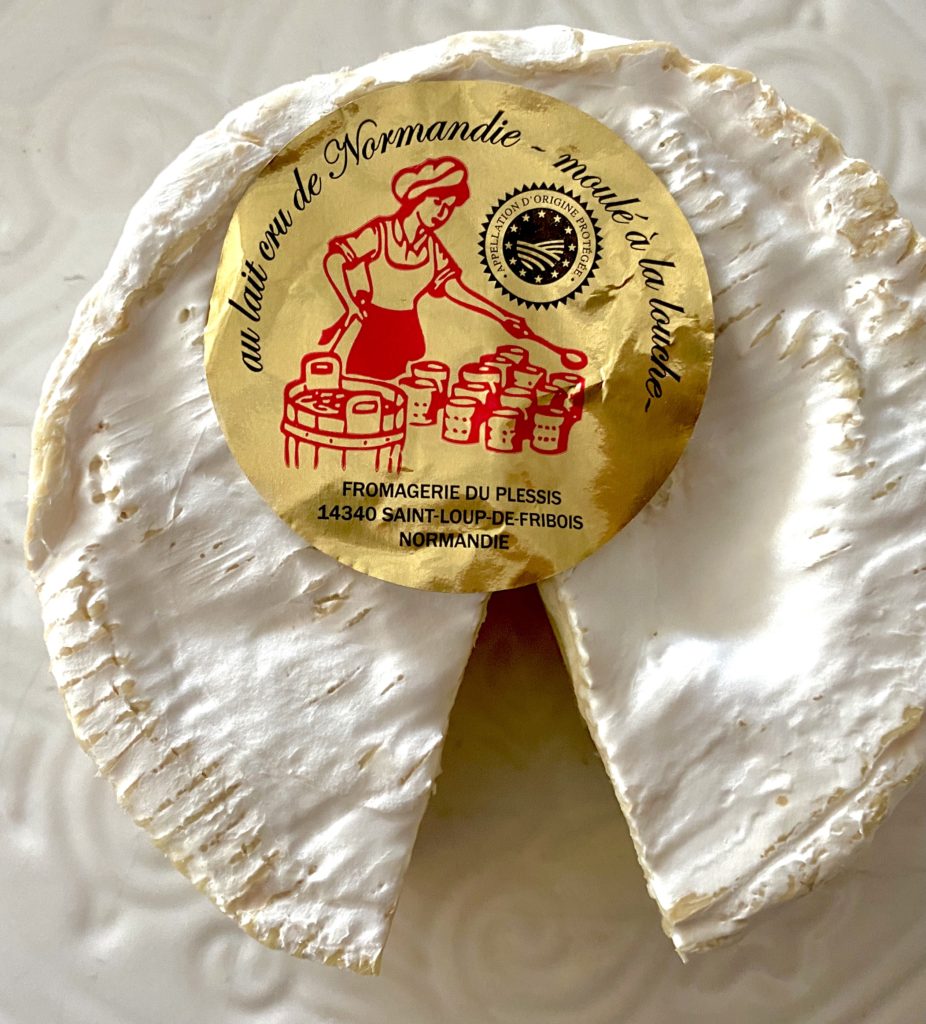
Increased demand for camembert and brie, and all French cheeses in the last two centuries, as well as industrialisation of the cheese-making process, has seen small, artisanal farmers lose out to the big companies. Add to this the pasteurisation of milk, and we are definitely not eating the cheese of our ancestors. However, in order to uphold its reputation as the gastronomic centre of the world, France strictly governs the manufacture of 46 cheeses (and 300 wines) via the French Appellation d’Origine Contrôlée (AOC) and equivalent European Appellation d’Origine Protégée (AOP) labels. This institution aims to protect terroir, the French notion that a product is linked to the place where it is made, from traditional manufacturing processes down to unique microorganisms in the air.
The Paynel family, the descendants of Marie Harel, and other Normandy dairy cooperatives, tried for many years to give regional status to camembert cheese. It was only in 1983 that camembert cheese could take the label Camembert de Normandie under the AOC, but it must be made with raw milk produced by mainly Norman cows who graze for more than 6 months a year.
The camembert round must be in the shape of a flat cylinder 10.5 to 11.5 cm in diameter and 3 cm in thickness, it must weigh at least 250g, have at least 115g of dry extract and 45% fat in the dry extract. Its fine rind must be flowery white (Penicillium candidum) to cream, sprinkled with red pigmentation (Brevibacterium), depending on the degree of ripening. The top and bottom must be flat and the side must be straight. It should be ripened to the core, inside smooth and supple; an ivory to light yellow in color; semi-ripened, it must have a central white “core” of 2-3 mm, in the center of the dough.
Institut national de l’origine et de la qualité, INAO
Watch this great video (in English) all about camembert de Normandie)
According to the INAO, in 2019 there were only 13 producers of Camembert de Normandie. And there are only two brie cheeses with AOC status – the Brie de Meaux (as enjoyed by Charlemagne) and Brie de Melun. Camembert and brie cheeses which do not follow AOC regulations can still be called camembert and brie, which is why you’ll find them made as far away as Tasmania in Australia!
So which came first, the camembert or the brie? It’s fair to say the brie won that race, though both are enormously popular in the cheesedom which is France, and all over the world.
27 March is National Cheese Day in France! And its on Facebook….
Which is your favourite? Brie, camembert, or another fromage entirely? Let me know in the comments below.
